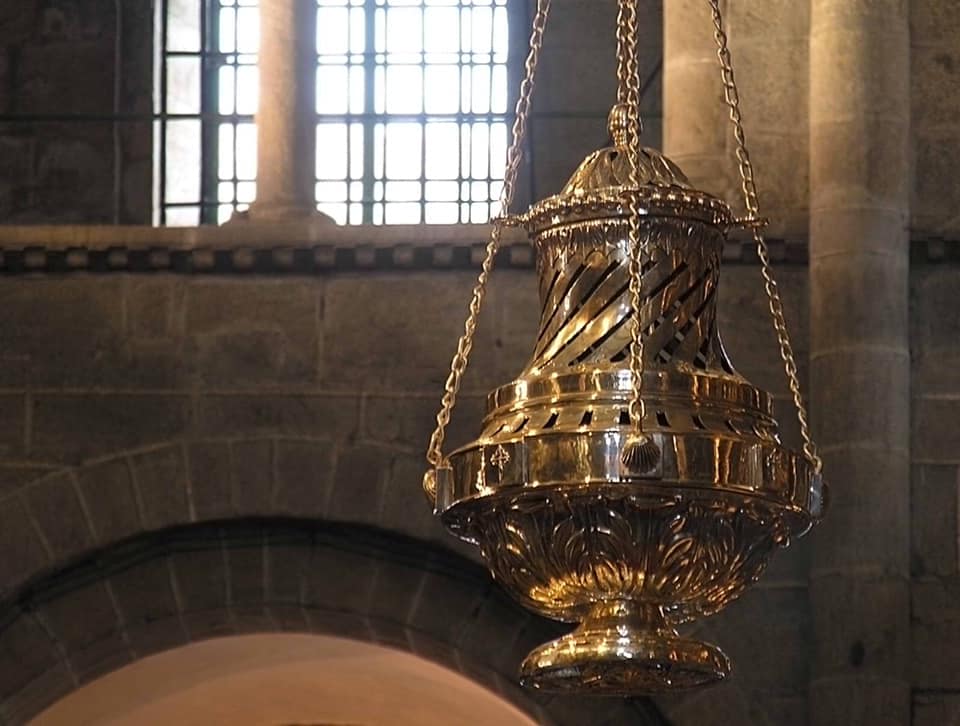The Botafumeiro
The Botafumeiro, meaning “censer” in Galician, is one of the most iconic and celebrated symbols of the Cathedral of Santiago de Compostela. This large thurible, suspended from the main dome by a system of pulleys, swings across the side naves. It requires the strength of eight men, known as “tiraboleiros,” to set it in motion. The Botafumeiro weighs 53 kg (117 pounds) and measures 1.50 meters (60 inches). It hangs from a height of 20 meters (65 feet), and can reach impressive speeds.

What is the purpose of the Botafumeiro?
The Cathedral uses the Botafumeiro for liturgical purposes. Therefore, it functions similarly to a censer used by a priest at the altar. It is operated during the Cathedral’s major solemnities, either during the entrance procession or at the conclusion of the Eucharist. Its primary purpose is symbolic: just as the incense smoke ascends to the temple’s roof, so too should the prayers of the pilgrims rise to reach the heart of God. Furthermore, just as the incense fragrance fills the basilica, Christians should infuse society with the virtues and the good scent of Christ through their lives.
It is also said that incense is used to mask the smell of pilgrims who have just arrived in Santiago de Compostela after walking the Camino.
A brief history of the Botafumeiro
The first recorded mention of the Botafumeiro appears in the 12th Codex Calixtinus. The Codex calls it the “Turibulum Magnum.” Over the centuries, there have been several versions of this thurible. Currently, there are two: one, crafted from brass in 1851 by José Losada, which replaced the original one stolen during the French occupation. This one is the most commonly used. The second is a silver replica donated by the Provisional Second-Lieutenants in 1971. This silver Botafumeiro is only installed in the cathedral’s transept during use and is otherwise stored in the Chapter Library.
When does it swing?
The Botafumeiro schedule
- The Epiphany: January 6th
- Resurrection Sunday
- The Apparition of the Apostle at the Battle of Clavijo: May 23rd
- Pentecost
- The Martyrdom of Saint James: July 25th
- The Assumption of Mary: August 15th
- All Saints: November 1st
- Christ the King
- The Immaculate Conception: December 8th
- Christmas: December 25th
- Transfer of the remains of the Apostle: December 30th
How much does it cost to request the Botafumeiro?
Pilgrims who would like to request the Botafumeiro at a Mass not included above can do so by writing an email to: [email protected]. Although there isn’t an official suggested Botafumeiro donation, it will most likely cost around 500 euros to organize.








